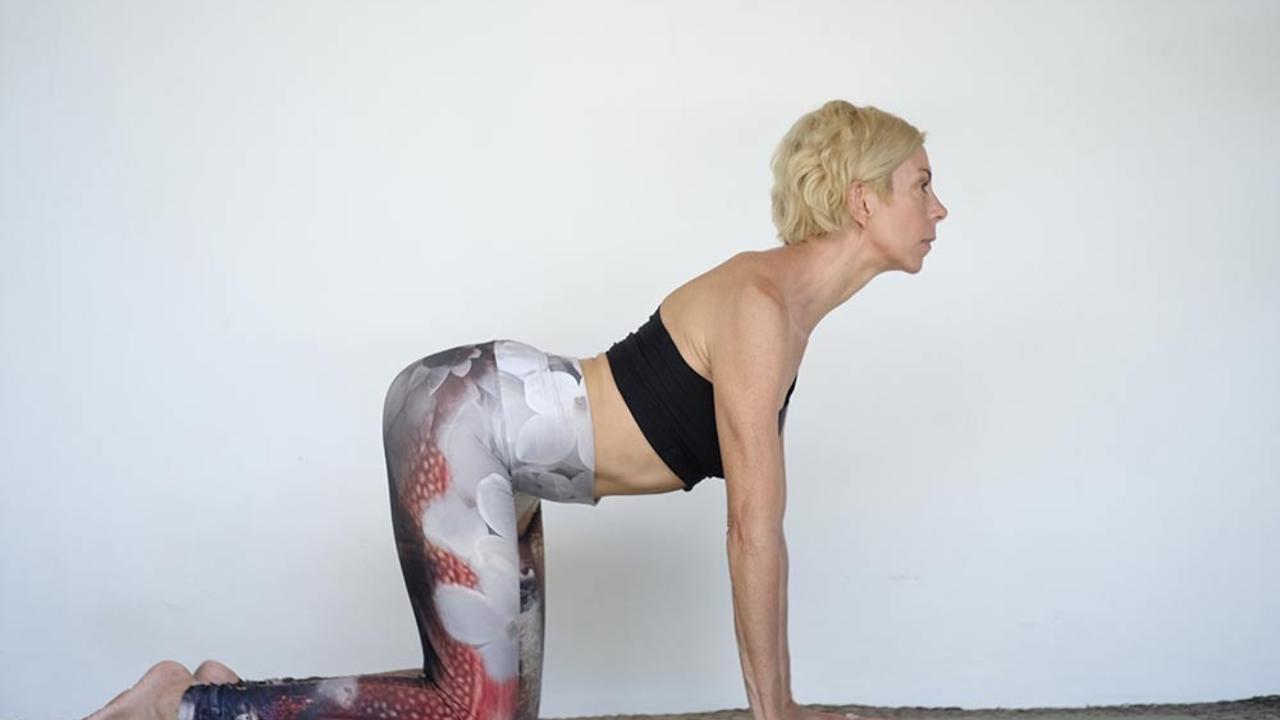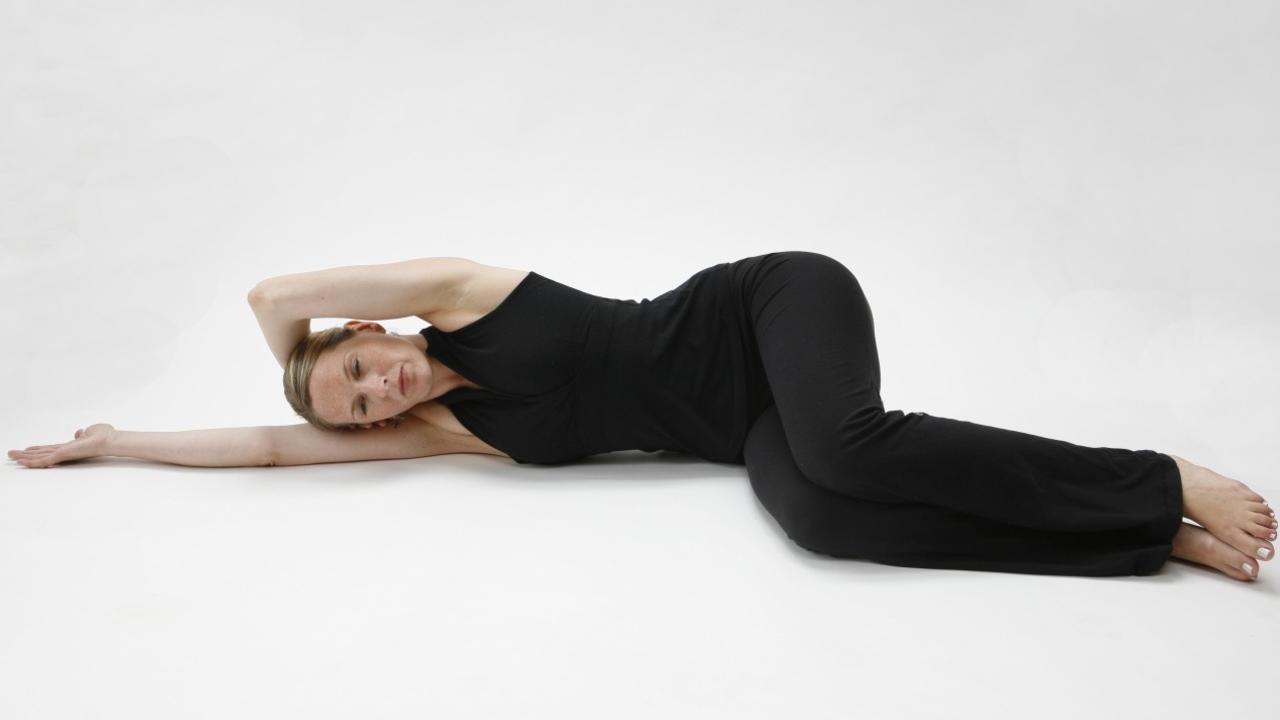Blog, News, Videos and Useful Resources
PSOAs Release Sequence: How To Feel Less Stressed & Triggered

Can your psoas muscle be negatively affecting your emotional wellbeing?
Let's be clear, I'm not suggesting that your psoas muscle is gonna start offering you advice about your relationship or career. What I am pointing to is the link between the current level of tension your psoas is holding and how relaxed you feel on a daily basis. And why I'm choosing a single muscle to for you to ponder on is for these reasons
The psoas plays such 3 very important roles. Firstly the psoas joins the upper and lower body making it a major postural muscle as it flexes and side bends your upper spine. Secondly, it's one of the main muscles recruited in walking. Thirdly the psoas attaches to the diaphragm, therefore, it has a role in how you breathe.
"But has any of this got to do with my emotional wellbeing" I hear you ask? Let me explain by painting a picture. Think about the last time when you were upset or stressed. Can you picture your posture? Can you remember how you were breathing? Can you see how the psoas would be involved in these actions?
When you experience ongoing anxiety, underlying fear, or coping with ongoing stress your nervous system operates from the fight and flight system. Your brain goes into high alert instructing your muscles to shorten and tighten, your breath quickens as you prepare you to react and act to whatever situation is present. As your psoas is involved in all of these actions you can see why this one muscle deserves a lot of care.
Becoming aware of this connection of your psoas is super important for your physical, emotional and mental health. If your feeling continuously stressed, or you're unable to process and release the stress you experienced, the tension in your psoas will remain in an activated state, even if you think you have calmed down.
As stress levels go up the disconnection between your mind and body can last for many years. The longer it's left unchecked the greater the habit becomes leaving you with a short, tight psoas become the norm.
But here comes the good news, because you've created this reaction then you can totally dismantle it and all it takes is awareness. So whenever you experience danger and the moment of heightened stress has passed, your psoas can naturally release and let go of the tension it is holding on its own.
Your dismantling journey starts here. In order to feel your psoas relax you first have to know what it fully feels like to have it tensed. This sequence teaches you just that. The outcome, stand taller, breath deeper and walk with ease.
Psoas Release 1.
Position: Lie on the back. Bend your right knee and the left leg straight. Arms are behind your head. Externally rotate your left leg and remain in this position.





Movement: Repeat 5 times
Exhale and flatten the back, sense how your abdominal muscles actively engage.
Do not overly engage your back muscles to do this exercise.
Imagine your leg starts at your navel.
Lift your left leg and feel you are picking up the leg by sucking the leg into the hip joint.
This is will support the action of the psoas contracts.
Sense the connection of your leg into the centre of your body.
Release the effort and with a control slowly lengthen the lead to the ground
Completely relax and take a breath in and out.
Start by lifting the leg about 6 inches. As you progress only lift as high as the opposite bent knee.
To give you a sense of the source muscle, bring your fingers about an inch towards the midline from your working legs’ hip bone.
Keep the back flat throughout this movement to allow for the movement to be done by the anterior portion of the psoas muscle.
Movement Notes
- On the release feel that you are lengthening the leg from the bottom of your ribs.
- This is the action of the psoas lengthening.
- Make sure you are keeping your leg externally rotated and not vertical.
- Relax completely after each movement.
- When you have done one side, straighten both legs and sense does the worked leg feel longer?
Psoas Release 2.




Movement: Repeat 3 times
Exhale to flatten the back.
Feel you are picking up the leg by sucking the leg into the hip joint.
Draw your elbows towards your ears; slowly curl your head of the floor.
Lift the leg in line with the bent knee as you flex your body towards the leg.
Sense how your breathing becomes shallow.
As you release it down, feel that you are lengthening the leg from the bottom of your ribs and upper torso away from the bottom of your ribcages.
Press your elbows onto the ground, inhale as you arch your lower back and open through the front body allowing your psoas to lengthen.
Movement Notes
- Sense the connection of your leg into the centre of your body.
- Relax completely after each movement.
- Make sure all your muscles completely relaxed between each round.
- When you have done one side, straighten both legs and sense does the worked leg feel longer?
- Try walking around the room to sense the changes from one side to the other.
- Repeat on the opposite side
The feeling of a relaxed psoas is like going away to a beautiful beach resort and getting totally pampered for the weekend. Now, don't you deserve this?
For a full understanding of how muscular tension and knots lead to poor posture, chronic pain and even emotional stress, check out "Stuck Stress Solutions", my introductory course to somatic movement.
In this, we cover my most effective techniques to identify the real causes of your stress and pain, and how to quickly release that tension in just 10 minutes a day.
Check out Stuck Stress Solutions here.
Stay connected with news and updates!
Join our mailing list to receive the latest news and updates from our team. You'r information will not be shared.
Other Posts

Relax & Release Lower Back Pain Sequence

PSOAs Release Sequence: How To Feel Less Stressed & Triggered

Release Sore, Tight Hip Tension: Invert/Evert Sequence

How To Solve Your Stubborn Shoulder Pain: Somatic Shoulder Slings

How Yoga Can Solve Your Back Pain

4 Simple Movements to Release Your Shoulder Pain

51 Beautifully Fearless Affirmations To Reduce Your Anxiety

9 Powerful Supplements You'll Need To Be Anxiety Free

What is Align Somatics?

A Pain Free Life

No Longer Trapped in My Own Body

A Complete Change of Life

Overcoming the Effects of Being Hunched Over a Desk

The Brain Beats Pain

Lower Back Pain Release

How to Relax Those Lower Back Muscles

Learn How to Relax All of Your Back Muscles

How to Improve Shoulder Mobility

Lengthening Tight Psoas Muscles

Techniques for Relaxing Spinal Muscles





